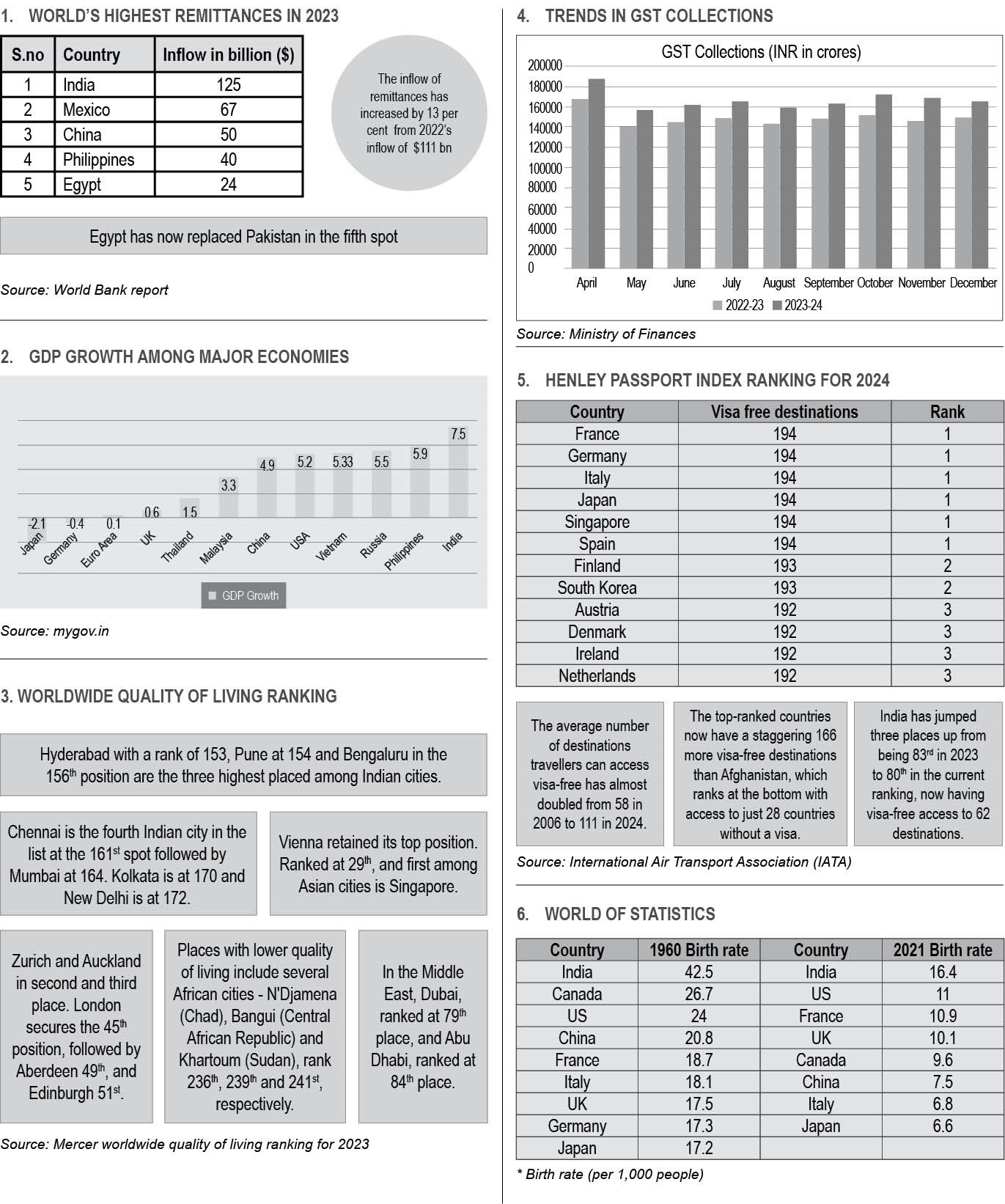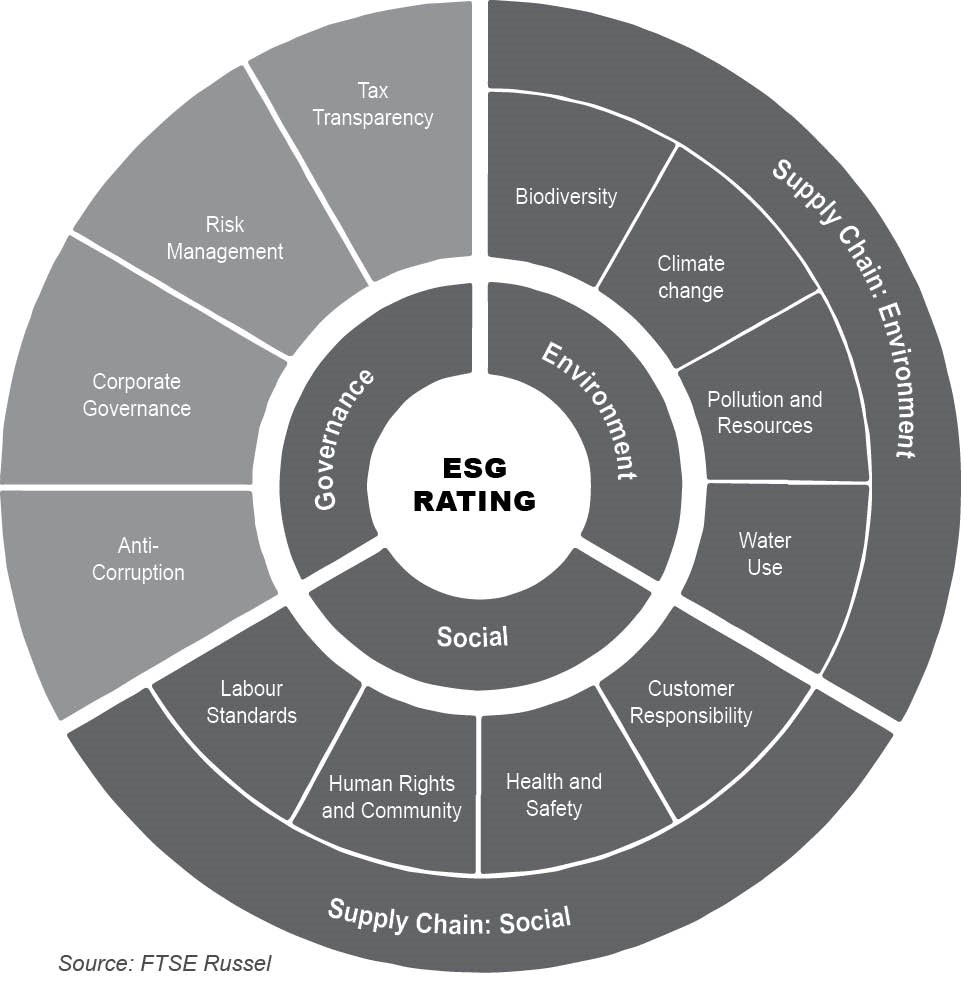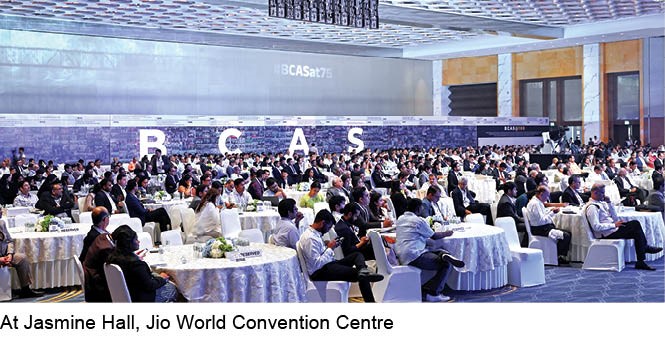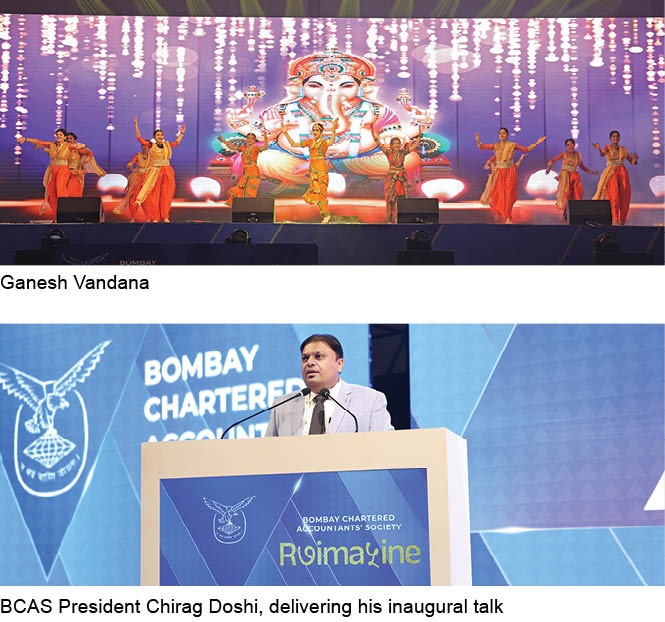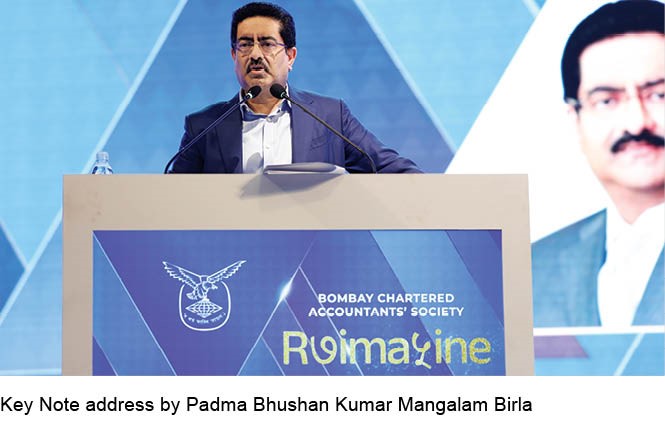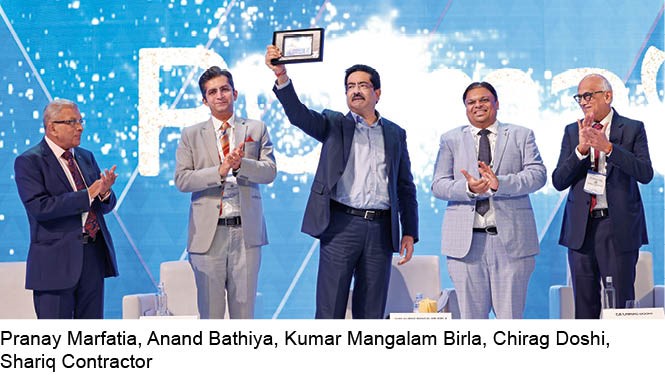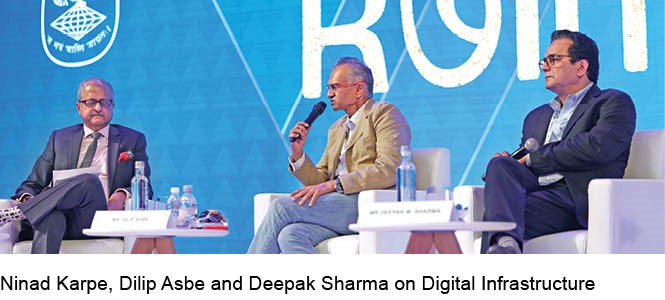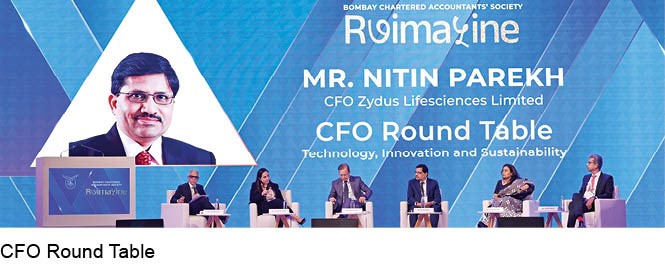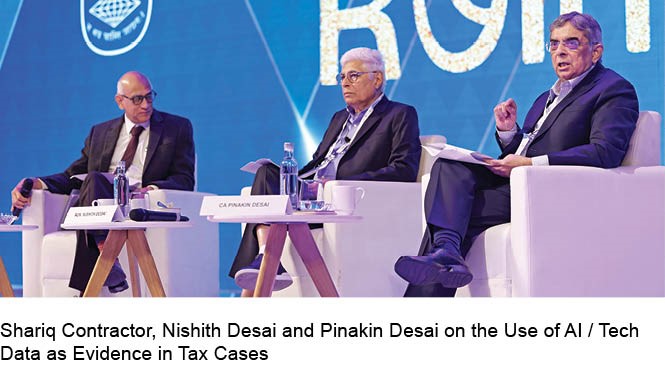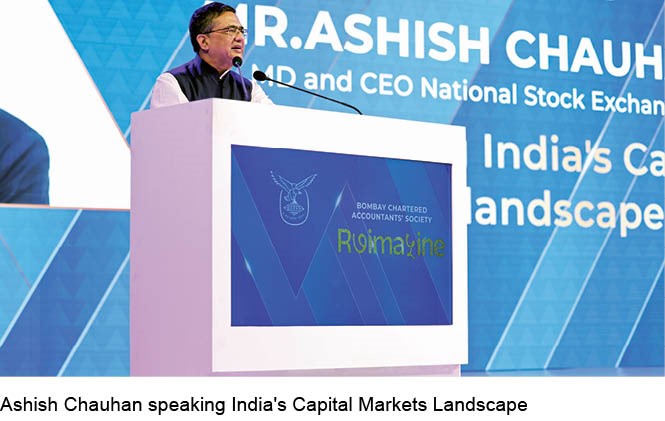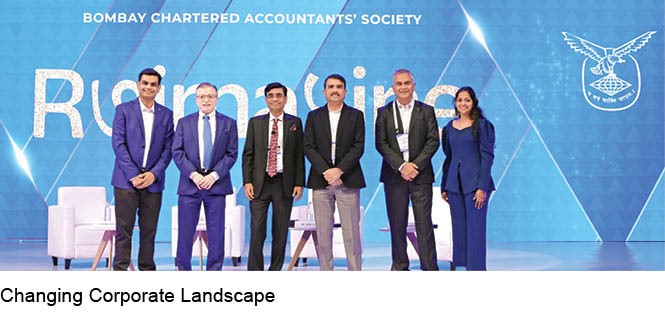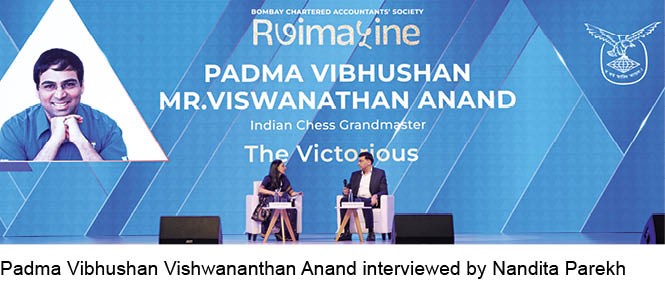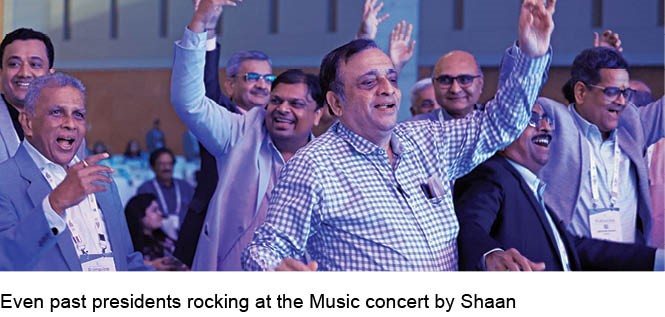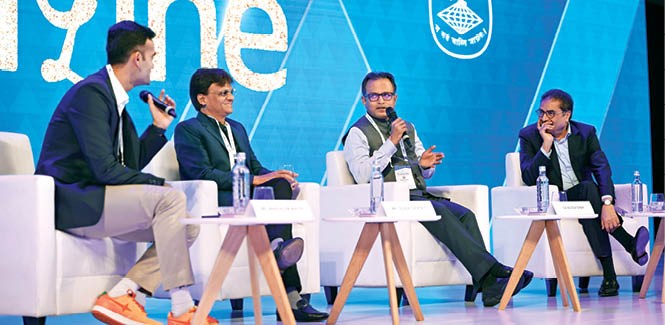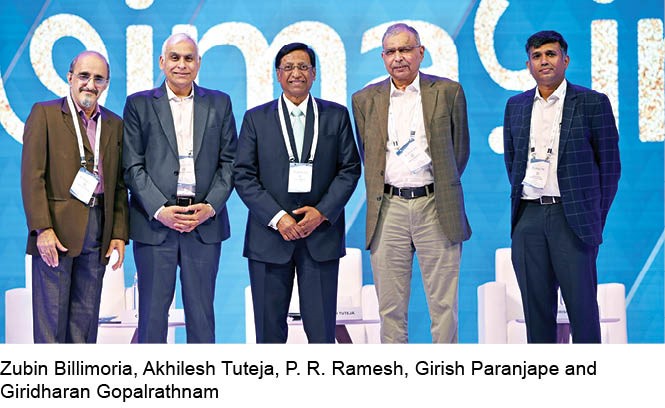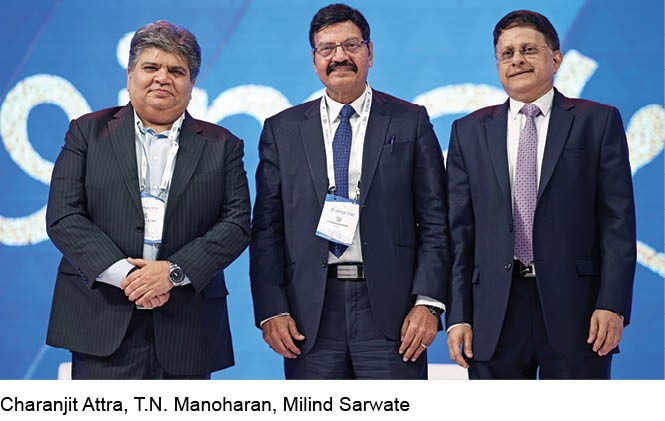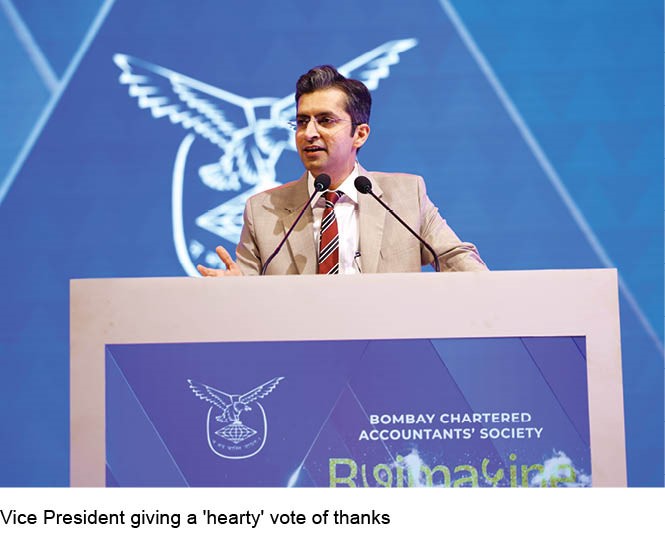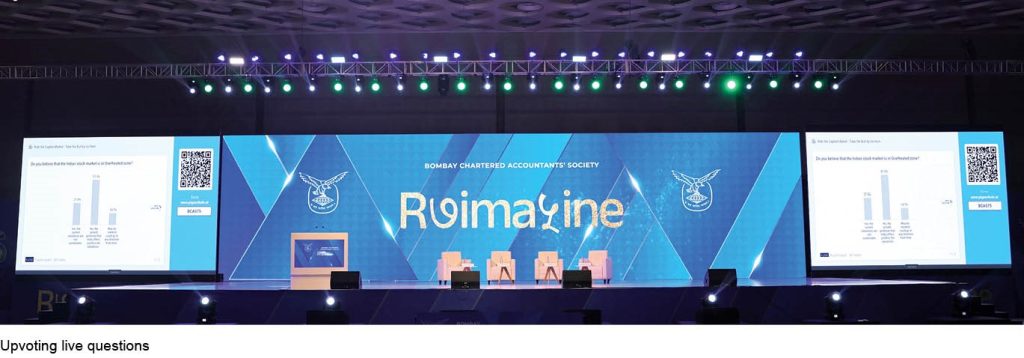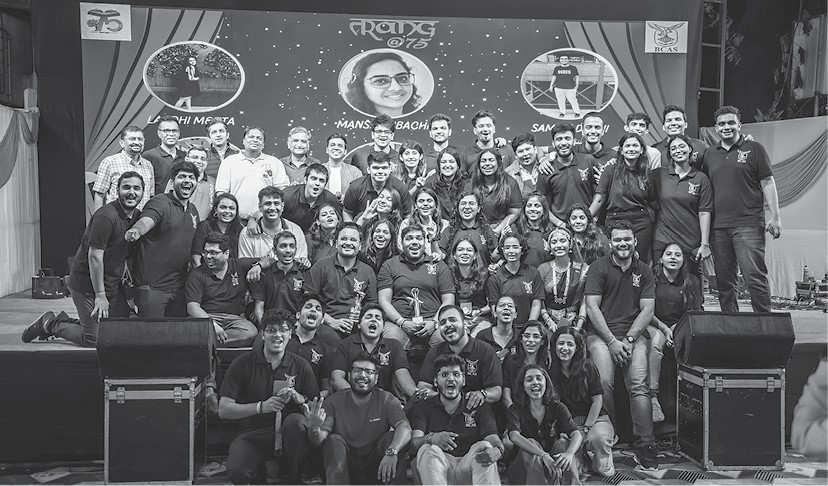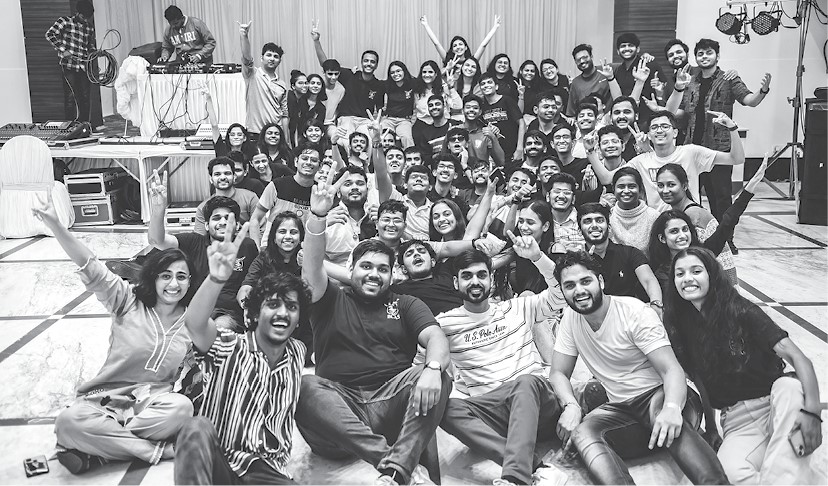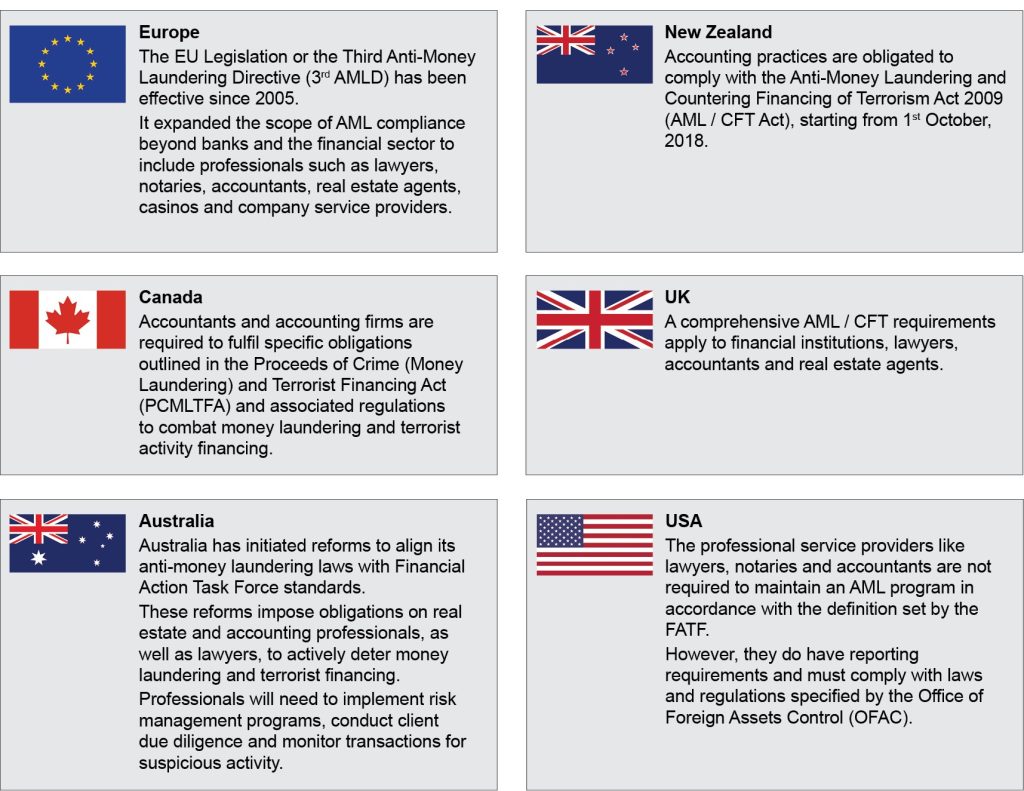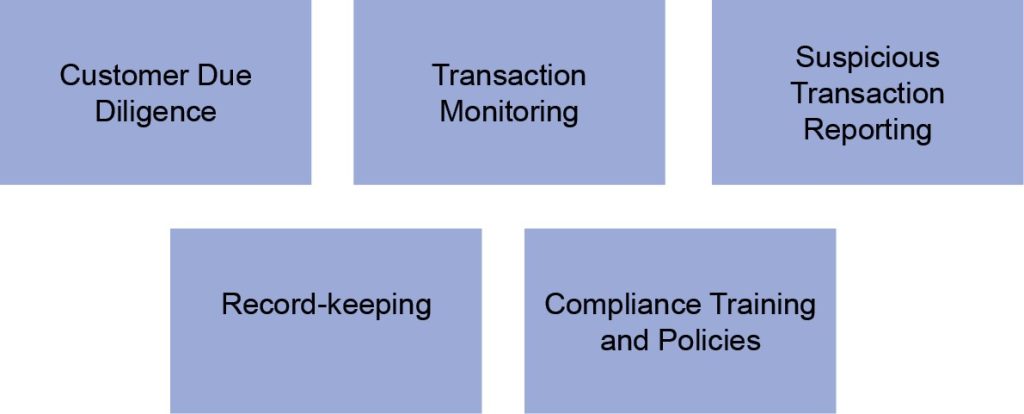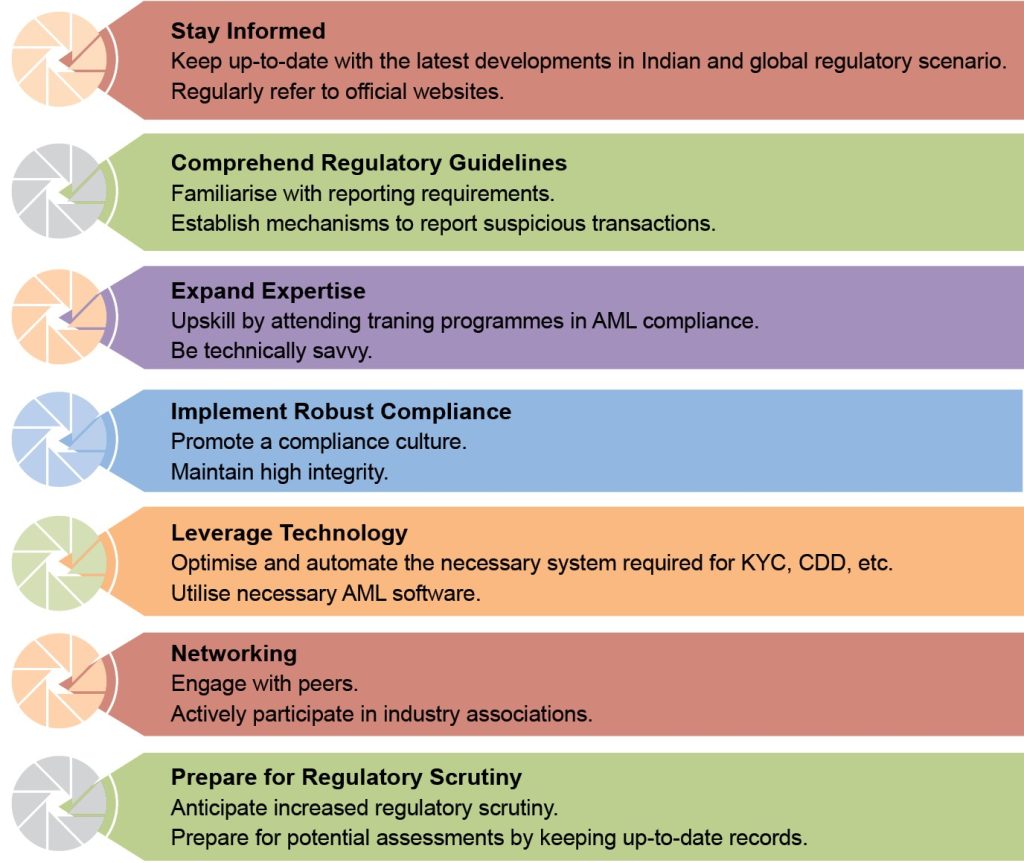A. NOTIFICATION
Notification No. 54/2023-Central Tax
dated 17th November, 2023
By above notification, the notification 27/2022 dated 26th December, 2022, is amended to notify Biometric Based Aadhaar authentication for GST registration in Andhra Pradesh.
B. ADVISORY / INSTRUCTIONS
a) The GSTN has issued Advisory dated 14th November, 2023, for Online Compliance pertaining to ITC mismatch-GST-DRC-01C.
b) Further Advisory dated 14th November, 2023, regarding ITC reversal on account of Rule 37(A) is issued.
c) Advisories dated 10th November, 2023, and 28th November, 2023, regarding procedure for provision related to the amnesty for tax payers who missed the appeal filing deadlines for the orders passed on or before 31st March, 2023, are issued.
d) Advisory dated 1st December, 2023, is issued about two-factor authentication for Taxpayers.
e) Further Advisory dated 1st December, 2023, regarding Pilot Project of Biometric-Based Aadhaar Authentication and Document verification, of GST registration applications of Andhra Pradesh, is issued.
f) Instruction No. 4/2023-GST dated 23rd November, 2023, is issued which is regarding serving of the summary of notice in Form GST-DRC-01 and uploading of summary of order in Form GST-DRC-07 electronically on the portal by the proper officer.
C. ADVANCE RULINGS
45. Liability on Canteen recovery — ITC — Inward transportation service
Kirby Building Systems & Structures India P. Ltd. (Order No. A. R. Com/21/2022
dated 15th November, 2023, (Telangana))
The facts are that the applicant M/s. Kirby Building Systems & Structures India Private Limited, Sangareddy, is into the manufacture and supply of pre-engineered buildings and storage racking systems. They provide canteen and transportation facilities to its employees at subsidised rates as per the terms of the employment agreement entered between the applicant and the employees.
In light of the above agreement, the applicant further submitted that by virtue of Section 46 of the Factories Act, 1948, they are obliged to run and maintain a canteen for their employees and for said purpose they are procuring canteen services from a third party who in turn is issuing invoice to the applicant by charging GST at a rate of 5 per cent.
The applicant submitted its say in brief as under:
“i. According to the applicant the canteen facilities provided to its employees do not qualify as supply u/s. 7 of the CGST Act and therefore no GST is leviable on the same.
ii. The applicant further relies on clarification provided by CBIC in Circular No. 172/04/2022 dt: 06.07.2022 and the press release no. 73/2017 dt: 10.07.2017 wherein it was clarified by the CBIC that prerequisites provided by the employer to its employees in terms of contractual agreement will not be subjected to GST.
iii. Further the applicant claims eligibility to ITC on the GST paid on canteen services in terms of provision to Section 17(5)(b) of the CGST Act, 2017 wherein it is provided that the input tax credit in respect of such goods or services or both shall be available, where it is obligatory for an employer to provide the same to its employees under any law for the time being in force.”
In respect of transportation service to employees, the applicant submitted that they are arranging for transportation facilities for the employees and recovering nominal amounts from the employees’ salaries towards the cost incurred for providing such transportation facility, without any commercial objective. It was submitted that:
“i. Such supply of transportation service shall not be treated as supply in terms of Section 7 of the CGST Act, 2017.
ii. That vide Notification No. 12/2017 dt: 28.06.2017, the intra-state supply of transport of passengers in non-air conditioned contract carriage, excluding tourism shall be exempted from the payment of Central tax; and that they are providing a service for transport of passengers in non-air conditioned contract carriage and therefore the service provided by them is exempt from tax.
iii. That the applicant is procuring bus services to facilitate smooth functioning of his business in the course of furtherance of his business and the cost incurred by the applicant pertaining to the transport facility provided to its employees is the expenditure incurred by the applicant in terms of the contract between the employer and employee. Therefore, that the applicant is eligible for input tax credit on the tax paid on hire of such vehicles.”
With the above background, following questions were raised.
“1. Whether GST is liable to be discharged on the recoveries being made by the applicant from its employees towards the canteen and transportation facilities provided to them?
2. Whether the applicant is eligible to avail input tax credit in respect of the GST paid on inward supplies used for providing canteen and transportation facilities?”
The learned members gave their different but concurring orders.
The sum and substance of the said order is that the canteen facility is as per requirement of Factories Act,1948, and the applicant is entitled to recover the cost as per Rule 68 of AP Factories Rules,1950, as adopted under Telangana Factories Rules.
The ld. members, in general, observed that if cost is fully recovered, then no cost will be borne by the applicant and hence no ITC. However, if only nominal amount recovered and rest born as cost, then the applicant will be eligible to ITC, as it is allowable as per section 17(5)(b) read with proviso thereto.
In respect of traveling inward, the ld. members were of the view that it is not under any statutory requirement but in the nature of personal consumption for employees.
Therefore, on inward transportation service, ITC is not eligible in view of section 17(5)(b), observed the ld. AAR.
On the supply outward side in both cases, it is held that if the providing service is as part of perquisite, then no liability to GST, but if it is against consideration as business, then such action will be liable to GST.
The ruling given by ld. AAR is as under:
| Questions |
Ruling |
| 1. Whether GST is liable to be discharged on the recoveries being made by the applicant from its employees towards the canteen facilities provided to them? |
If it is by way of perquisites not liable. However, if canteen services as a business are liable to GST. |
| 2. Whether the applicant is eligible to avail input tax credit in respect of the GST paid on inward supplies used for providing canteen facilities? |
ITC will be eligible in view of section 17(5)(b). |
| 3. Whether GST is liable to be discharged on the recoveries being made by the applicant from its employees towards the transportation facilities provided to them? |
If it is by way of perquisites not liable. However, if such services as business are liable to GST. |
| 4. Whether the applicant is eligible to avail input tax credit in respect of the GST paid on inward supplies used for providing transportation facilities? |
No ITC as it will be personal consumption. |
46 Supply by sub-contractor to Contractor — separate supply than by principal contractor to its contractee
Immense Construction Co.
(Order No. A.R. Comm/13/2023
dated 13th November, 2022 (Telangana))
The Applicant M/s Immense Construction Company is a Firm registered under the Goods and Services Tax Act, 2017. It undertakes contracts / subcontracts of the entire work for Operation and Maintenance of Water Supply Projects / Sewerage Projects / Facilities.
The Applicant is awarded a contract by M/s. The Indian Hume Pipe Company Ltd. (referred to as “Principal Contractor”).
The Principal Contractor is awarded a contract by the State of Telangana, Mission Bhagiratha.
The subcontract agreement is carved out of the Principal Contract, and it clearly indicates scope of the work to be undertaken and obligations of such subcontractor. The conditions of subcontract also provide that the subcontract agreement is liable to termination if the work is not executed and maintained as per Guidelines of Mission Bhagiratha, State Government of Telangana.
It is also mentioned by applicant that value of goods is not more than 25 per cent of the subcontracted value (as can be verified from the Contract so awarded) and therefore exempted from payment of GST in terms of entry 3A in Notification No. 12/2017 – Central Tax (Rate) as amended by Notification No. 2/2018 Central Tax (Rate) dated 25th January, 2018; and that the subcontract only for supply of Man Power is Pure Service and hence exempted from payment of GST in terms of Entry 3 in Notification No. 12/2017 – Central Tax (Rate) as amended by Notification No. 2/2018 – Central Tax (Rate) dated 25th January, 2018.
The applicant further presented its Interpretation of Law for each of the above questions as under:
“a) That services provided by the Applicants are Pure Services;
b) That these services are ultimately provided to the State Government of Telangana;
c) That these services are in relation a function entrusted to a Municipality under Article 243W of the Constitution (the present work falls under Serial No. 5 of 12th Schedule being water supply for domestic purpose);
d) That the services are covered by the Entry No. 3 of Notification No. 12/2017 Central Tax (Rate) dated 28th June, 2017;
e) That the Applicant draws support from Circular No. 147/16/2011-Service Tax dated 21st October, 2011 issued under the erstwhile Service Tax regime wherein under similar situations the Department had clarified that the services provided by the subcontractors to the main contractors in relation to those very projects which are classifiable as Infrastructure Projects Works Contract Services, then they too will get the benefit of exemption so long as they are in relation to the very same Infrastructure Projects i.e. WCS;
f) That the Applicant also draws support from the observations of the Hon’ble Apex Court in the case of State of Andhra Pradesh vs. Larsen and Toubro 17 VST 1 (SC) – 2008-VIL-30-SC wherein it was submitted by the Company and upheld by the Court that the transfer of property in goods, as effected by the sub-contract, resulted in direct sale to the Contractee and consequently it did not involve multiple sales either in favour of the main contractor or in favour of the Contractee.”
In respect of ‘Pure Service’ they further submitted that the said transaction is covered by Notification No. 12/2017- Central Tax (Rate), dated 28th November, 2017, as amended by Notification No. 2/2018 dated 25/01/2018 under Entry 3 and it is exempt from Tax.
With above facts, following questions were raised:
“a. Whether the supply of Services by the Applicant to M/S. THE INDIAN HUME COMPANY LTD. is covered by Notification No. 12/2017- Central Tax (Rate), dated 28th November, 2017 as amended by Notification No 2/2018 – Central Tax (Rate) dated 25/01/2018;
b. If the supplies as per Question (a) are covered by Notification No. 12/2017 Central Tax (Rate), dated 28th November, 2017 as amended by Notification No 2/2018 Central Tax (Rate) dated 25/01/2018, then what is the applicable rate of Tax under the Goods and Services Tax Act, 2017 on such Supplies; and
c. In case, if the supplies as per Question (a) are not covered by the Notification supra then what is the applicable rate of tax on such supplies under the Goods and Services Tax Act, 2017.”
Based on above, the ld. AAR observed that the basic enquiry in this proceeding is regarding.
“1. Whether the supply of works contract services by a contractor and his procurement works contract services constitute two independent taxable events under the CGST Act.
2. Whether an exemption extended to a contractor supplying works contract services is applicable to his procurement of works contract.”
The ld. AAR made reference to the Notification No. 12/2017 – Central Tax (Rate), dated 28th June, 2017, which is amended vide Notification 2/2018 – Central Tax (Rate), dated 25th January, 2018, to include entry 3A in same in order to exempt works contract with value of supply of goods less than 25 per cent, when the said supply is made to the Central Government, State Government or Local Authority, etc., and if the activity is related to any function entrusted under Article 243G or 243W of the Constitution of India.
The ld. AAR observed that the exemption is not a general exemption but subject to conditions that the supply has to be made to Central Government, State Government or Local Authority, etc. The ld. AAR found that there is no mention in entry of sub-contractors making supply of such services to a contractor who in turn is making supplies under entry 3A of Notification 12/2017, as amended above.
The ld. AAR, making reference to judgments, held that the exemption entry is to be interpreted strictly. It is also observed that where it is felt necessary, the Government has mentioned the category of sub-contract also for grant of concession like, in Notification no. 1/2018 – Central Tax (Rate) dated 25th January, 2018, r/w. Notification no. 11/2017. The ld. AAR observed that though the CGST Act does not define a subcontractor, however, the Notification 11/2017, as amended, makes a mention of the subcontractor whose services are procured by the main contractor. Accordingly, the ld. AAR observed that the Scheme of the Act clearly identifies the subcontractor as a supplier of works contract services to the main contractor.
With above observations, the ld. AAR passed ruling as under:
| “Questions |
Ruling |
| a. Whether the supply of Services by the Applicant to M/S. THE INDIAN HUME COMPANY LTD. is covered by Notification No. 12/2017- Central Tax (Rate), dated 28th November, 2017 as amended by Notification No. 2/2018 – Central Tax (Rate) dated
25th January, 2018; |
No |
| b. If the supplies as per Question (a) are covered by Notification No. 12/2017 Central Tax (Rate), dated 28th November, 2017 as amended by Notification No. 2/2018 Central Tax (Rate) dated
25th January, 2018, then what is the applicable rate of Tax under the Goods and Services Tax Act, 2017 on such Supplies; and |
Not Applicable |
| c. In case if the supplies as per Question a are not covered by the Notification supra then what is the applicable rate of tax on such supplies under the Goods and Services Tax Act, 2017. |
9 per cent CGST + 9 per cent SGST” |
47 Business — Composite Supply in Education / Healthcare Services
Kasturba Health Society (Order No. MAH/AAAR/DS-RM/13/2022-23
dated 5th December, 2022, (MAH))
The facts are that the appellant had earlier filed an AR application, which was rejected. Against the said rejection, appeal was filed before AAAR. The said appeal was also rejected. Therefore, a writ petition was filed in Bombay High Court and Hon. Bombay High Court directed the authorities to decide the question raised in the AR application. Accordingly, the AAR decided issues vide its order in GST-AAR-120/2018-2019/B-90 dated 30th November, 2021. Some questions were decided against the appellant and hence, this appeal was filed before AAAR.
The basic facts are that the Kasturba Health Society was formed as a Charitable Institution by way of Registration under the Societies Registration Act, 1860, and also under The Bombay Public Trust Act, 1950, with the sole objective of attending the health needs of rural India.
The Appellant society was also registered under Section 12AA of the Income Tax Act, 1961, and it has other registrations also.
The appellant is imparting Medical Education, till Post Graduation. The appellant has its setup in the form of a “Medical College” named as “Mahatma Gandhi Institute of Medical Science”, at Village Sewagram. Dist. Wardha, which is attached with a clinical laboratory named as “Kasturba Hospital”.
The appellant was not registered under earlier BST/MVAT Act or Service Tax. However, entertaining doubt, this application for AR was filed under GST.
The questions put forward by appellant in its AR application and its replies by AAR are as under:
i. Whether the applicant, a Charitable Society, having the main object and factually engaged in imparting Medical Education, satisfying all the criteria of “Educational Institution”, can be said to be engaged in the business so as to cast an obligation upon it to comply with the provisions of Central Goods and Service Tax Act, 2017, and Maharashtra Goods and Service Tax Act, 2017 in totality.
Reply: Appellant engaged in business.
ii. Whether the applicant, a Charitable Society, having the main object and factually engaged in imparting Medical Education, satisfying all the criteria of “Educational Institution” is liable for registration under the provisions of section 22 of the Central Goods and Services Tax Act, 2017 and Maharashtra Goods and Services Tax Act, 2017, or it can remain outside the purview of registration in view of the provisions of section 23 of the said act as there is no taxable supply.
Reply: Liable for registration.
iii. In a situation, if above questions are answered against the contention of the appellant institution, then following further questions were raised for the kind consideration by the Honourable Bench.
a. Whether the fees and other charges received from students and recoupment charges received from patients (who is an essential clinical material for education laboratory) would constitute as “outward supply” as defined in section 2(83) of The Central Goods and Service Tax Act, 2017 and Maharashtra Goods and Service Tax Act, 2017, and if yes, then whether it will fall in classification entry at Sr. No. 66 or the portion of nominal amount received from patients (who is an essential clinical material for education laboratory) at Sr. No. 74 in terms of Notification 12/2017 Central Tax(R) – dated 28th June, 2017.
Reply: Charges are exempt from GST.
b. Whether the cost of Medicines and Consumables recovered from OPD patients along with nominal charges collected for Diagnosing by the pathological investigations, other investigation such as CT-Scan, MRI, Colour Doppler, Angiography, Gastroscopy, Sonography during the course of diagnosis and treatment of disease would fall within the meaning of “composite supply” qualifying for exemption under the category of “educational and /or health care services.”
Reply: Charges are exempt from GST.
c. Whether the nominal charges received from patients (who is an essential clinical material for education laboratory) towards an “Unparalleled Health Insurance Scheme” to retain their flow at one end for the purpose of imparting medical education as a result to provide them the benefit of concessional rates for investigations and treatment at other end would fall within the meaning of “supply” eligible for exemption under the category of “Education and/or Health Care Services.”
Reply: The charges are liable to 18 per cent GST.
d. Whether the nominal amount received for making space available for essential facilities needed by the students and staffs such as Banking, Parking, Refreshment, etc. which are support activities for attainment of main activities and further amount received on account of disposal of wastage would fall within the meaning of “supply”, qualifying for exemption under the category of “educational and / or health care services”.
Reply: The charges are liable to 18 per cent GST.
This appeal was filed against the above ruling of ld. AAR. In appeal, the appellant mainly contended that it is not doing any business and, therefore, GST not applicable to it.
Similarly, the ruling about taxability of charges was contested as erroneous.
In the course of appeal, the department also made its submission and reiterated that the AR is correctly decided.
The ld. AAAR thereafter analysed the argument of both sides.
Regarding the first issue as to whether the impugned activities of Appellant of providing educational services by way of imparting medical education through MGIMS, and providing the health care services through Kasturba Hospital, can be construed as “Business” in terms of the provisions of CGST Act, 2017, the ld. AAAR examined the definition of “Business” provided under section 2(17) of the CGST Act, 2017.
The ld. AAAR also observed that the appellant is doing such job or work which requires the services of highly educated, trained and skilled persons in the form of doctors hired by them for imparting the medical education to the students and hence, the said work done by the appellant is in the nature of “profession”, and accordingly, it is to be construed as “business” in terms of the GST provisions. The provision of health care services by the Appellant through its establishment, Kasturba Hospital, is also “profession” as envisaged under the definition of the term “business” provided under the GST law. The ld. AAAR held that the appellant is in business.
The ld. AAAR also examined whether the said activities of educational services and health care services undertaken by the Appellant will be construed as “supply” in terms of section 7(1)(a) of the CGST Act, 2017 or not. The definition of “supply” also reproduced as under:
“Section 7
(1) For the purposes of this Act, the expression ‘supply’ includes-
(a) ‘all forms of supply of goods or services or both such as sale, transfer, barter, exchange, license, rental, lease or disposal made or agreed to be made for a consideration by a person in the course or furtherance of business.’”
The ld. AAAR observed that following criteria is to be fulfilled for activity to be ‘supply’.
“i. that such supply should be made by a person for a consideration;
ii. that such supply should be made in the course or furtherance of business;”
The ld. AAAR held that the appellant fulfils criteria of being a person, the activity being in the course of business and hence, the activities are ‘supply’ under GST.
Coming to the next issue about exemption, the ld. AAAR held that the activities of imparting medical education
to the students squarely fit under entry at Sl. No. 66 of the exemption Notification No. 12/2017-C.T. (Rate) dated 28th June, 2017, which reads as under:
| “Sl.
No. |
Chapter, Section, Heading, Group or Service Code (Tariff) |
Description of Services |
Rate
(percentage) |
Conditions |
| 66 |
Heading 9902 |
Services provided – (a) by an educational institution to its students, faculty and staff; |
NIL |
NIL” |
The ld. AAAR observed that the services of medical education provided by the Appellant-Society is recognised by the Maharashtra University of Health Sciences, Nashik and Nagpur University, hence it falls under the category of “educational institution” as defined under the GST law, and accordingly, the ld. AAAR held that the medical education services provided by the Appellant to the students will attract NIL rate of GST as per the aforesaid entry 66, and allowed it as exempt.
Regarding the second activity of the health care services also, the ld. AAAR held that it will squarely fit under the entry at Sl. No. 74 of the exemption Notification No. 12/2017-C.T.(Rate) dated 28th June, 2017, which reads as under:
| “Sl.
No. |
Chapter, Section, Heading, Group or Service Code (Tariff) |
Description of Services |
Rate
(percentage) |
Conditions |
| 74 |
Heading 9993 |
(a) Services by way of (a) health care services by a clinical establishment, an authorized medical practitioner or paramedics;
(b) services provided by way of transportation of a patient in an ambulance, other than those specified in (a) above. |
NIL |
NIL” |
The ld. AAAR observed that the services of appellant are ‘health care services’ and will be exempt from the payment of GST in terms of the entry at Sl. No. 74 above.
The learned AAAR observed that the above services are ‘outward services’ as appellant receives charges from students and recoupment charges from patients which constitute consideration for outward supply.
Accordingly, the ld. AAAR held that the core services of the Appellant, viz. provision of medical education to the students and provision of health care services to the patients, are exempted supplies.
In respect of cost of medicines and consumables recovered from OPD, patients along with nominal charges collected for diagnosis etc. during the course of diagnosis and treatment of disease, the ld. AAAR held that they are covered by scope of ‘composite supply’ as defined in section 2(30) of GST Act.
The ld. AAAR, therefore, held that they are exempt along with core health care services.
Regarding the recovery under the second activity, namely, “Unparallel Health Insurance Scheme” under which the Appellant collects a nominal specific amount from the public who intends to avail the health care services from the Appellant in future at the concessional rate, the ld. AAAR observed that it is not an insurance service in real terms as it is not under licence from IRDAI. The AAR has classified the said activities as liable to GST at 18 per cent. However, the ld. AAAR concurred with the Appellant’s contention that the said nominal amount being charged by them are in the nature of advances towards the provision of the health services which would be provided to the subscribers of the said scheme. Therefore, the ld. AAAR held that receipts are eligible for exemption under the entry at Sl. No. 74 of the exemption Notification No. 12/2017-C.T. (Rate) dated 28th June, 2017.
Regarding further activity of providing space for the facilities, like Banking, Parking, Refreshment Canteen, etc., the ld. AAAR observed that the said activities are not directly provided to the students or patients, who are the recipients of the main services of the Appellant. The receipts are from third parties for renting of immovable property by way of providing space for the facilities like banking etc., who are running these establishments on their own account.
The ld. AAAR held that they are, therefore, not composite supply as not provided to the same one person but two separate persons.
Accordingly, the ld. AAAR held the said receipts taxable at the applicable rate of 18 per cent.
In respect of receipts on account of disposal of wastes such as medical equipment, apparatus and other instruments, etc., by selling them to the interested vendors, the ld. AAAR held them as independent activity and hence ruled as liable to tax.
Accordingly, the ld. AAAR concurred with replies of AAR mentioned in questions (i), (ii), (iii)(b) and (iii)(d). The ld. AAAR modified the ruling in respect of (iii)(a) and (iii)(c) to hold said activities as exempt.
Classification — ‘Honeycomb paper for wrapping’
V. M. Technocoatings (AR No. UP-ADRG-11/2022 dated 30th August, 2022 (UP))
The applicant is undertaking a process to prepare eco-friendly expandable paper wrap (replacement of bubble wrap) from kraft paper and to sell the same in open market.
The process is explained as under:
“First they prepare the core material by using the two or more sheets of honeycomb like structure kraft paper which is glued together in an alternate glue strip pattern to create structure of multiple layers of kraft paper in vertical direction. These corrugated layers open out in the form of continuous honeycomb like grid with center of each corrugated strip attached to another layer of corrugated strip upon expansion. Depending upon the product being packed with this material, multiple paper honeycomb wrap may be glued together to make specific design of packing material.
These paper honeycomb used in the primary packing of goods as a cushioning material, separators or edge protector, to make shipping cartons of goods and as pallets and pallet boxes.
This paper honeycomb wrap consists of 80 to 90% of kraft paper and rest is other adhesive, hence this paper honeycomb wrap classifies under HSN 4808 category. Contrary to this, 4823-chapter heading is more oriented towards ‘other paper, paperboard, cellulose wadding and webs of cellulose fibers’ etc. and not specific to kraft paper products.”
The applicant made reference to the fact that the main raw material to make honeycomb wrapping paper contains 80–90 per cent of kraft paper, and the rest other things are consumable items.
Reliance placed on order of Karnataka AAR in the case of M/s. Lsquare Ecoproducts Pvt. Ltd. (2020 (37) GSTL 394 (AAR-GST-Kar-2020-VIL-123-AAR)) where in it held as below:
“Therefore, on verification of the structure and purpose for which kraft paper honeycomb board or paper honeycomb board used are similar to the corrugated paperboard (listed under 4808 10 00), only difference is that this paper honeycomb board consists of honeycomb like structure core material at the center and on either side of this one or more layer of kraft paper is glued by using adhesive with fluting direction being perpendicular to corrugated boards. Hence this honeycomb paperboard classified under the Heading 4808 90 00 as other instead 4808 10 00.”
In the above case, the same item is held as covered by heading 4808-9000 attracting GST at 12 per cent.
The applicant also referred to the setting of heading 4808 in Custom Tariff.
The ld. AAR also considered the submission of the department, wherein they submitted that the item is classifiable under Chapter Sub-heading No. 48239013.
The ld. AAR observed about meaning of ‘paper’ referring to dictionary as under:
Meaning of the said word is explained in The Shorter Oxford Dictionary [Volume 2 (Third Edition)] as- “a substance composed of fibres interlaced into a compact web, made from linen and cotton rags, straw, wood, certain grasses, etc. which are messed into a pulp, and pressed; it is used for writing, printing, or drawing on, wrapping things in, for covering the interior or walls, etc.”
Encyclopaedia Britannica says – “Paper, the general name for the substance commonly used for writing upon or for wrapping things in.”
In Unabridged Edition of the Random House Dictionary of the English Language the word “paper” has been defined as “a substance made from rags, straw, wood or other fibrous material, usually in thin sheets, used to bear writing or printing on or for wrapping things, decorating walls etc.”
As per Webster’s Dictionary- “Paper, a thin flexible material made in leaves or sheets from the pulp of rags, straw, wood or other fibrous material and used for writing or printing upon or for wrapping and various other purposes.”
Accordingly, the ld. AAR observed that in popular parlance the word “paper” is understood as meaning a substance which is used for writing or printing, or for packing or for drawing on, or for decorating, or covering walls.
The ld. AAR after referring to the process adopted by the applicant also made reference to judgment of Hon’ble Rajasthan High Court in the case of Deepak Agencies vs. Assistant Commercial Tax Officer, (1993) 90 STC 376 (Raj) to ascertain the meaning of ‘paper’.
The ld. AAR held that the intended use of the material in question should be the guiding factor for deciding the classification of the commodity.
The ld. AAR also referred to the scheme of classification under GST with reference to Notification no. 1/2017-Central Tax (Rate) dated 28th June, 2017, and also to General Rules for the Interpretation of Import Tariff which provides for classification of goods in this Schedule.
After examining the schedule of Tariff, the ld. AAR observed as under:
“As per Rule 3(a) of General Rules for the Interpretation of Import Tariff, the heading which provides the most specific description shall be preferred to headings providing general description. The Tariff item 48239013 contains specific description of Packing and wrapping paper. The product ‘eco-friendly expandable paper wrap (honeycomb paper for wrapping)’ is manufactured from the kraft paper and adhesives and the same is used in wrapping/packing as such Rule 3(a) of General Rules for the Interpretation of Import Tariff will apply and the same merits classification under HSN 48239013.”
After considering the above position the ld. AAR gave ruling as under:
“25. Ques. Whether HSN applicable to eco-friendly expandable paper wrap (honeycomb paper for wrapping) is 48239013 or 48084090?
Answer- The HSN code of the product namely “eco-friendly expandable paper wrap (honeycomb paper for wrapping) is 48239013.”













